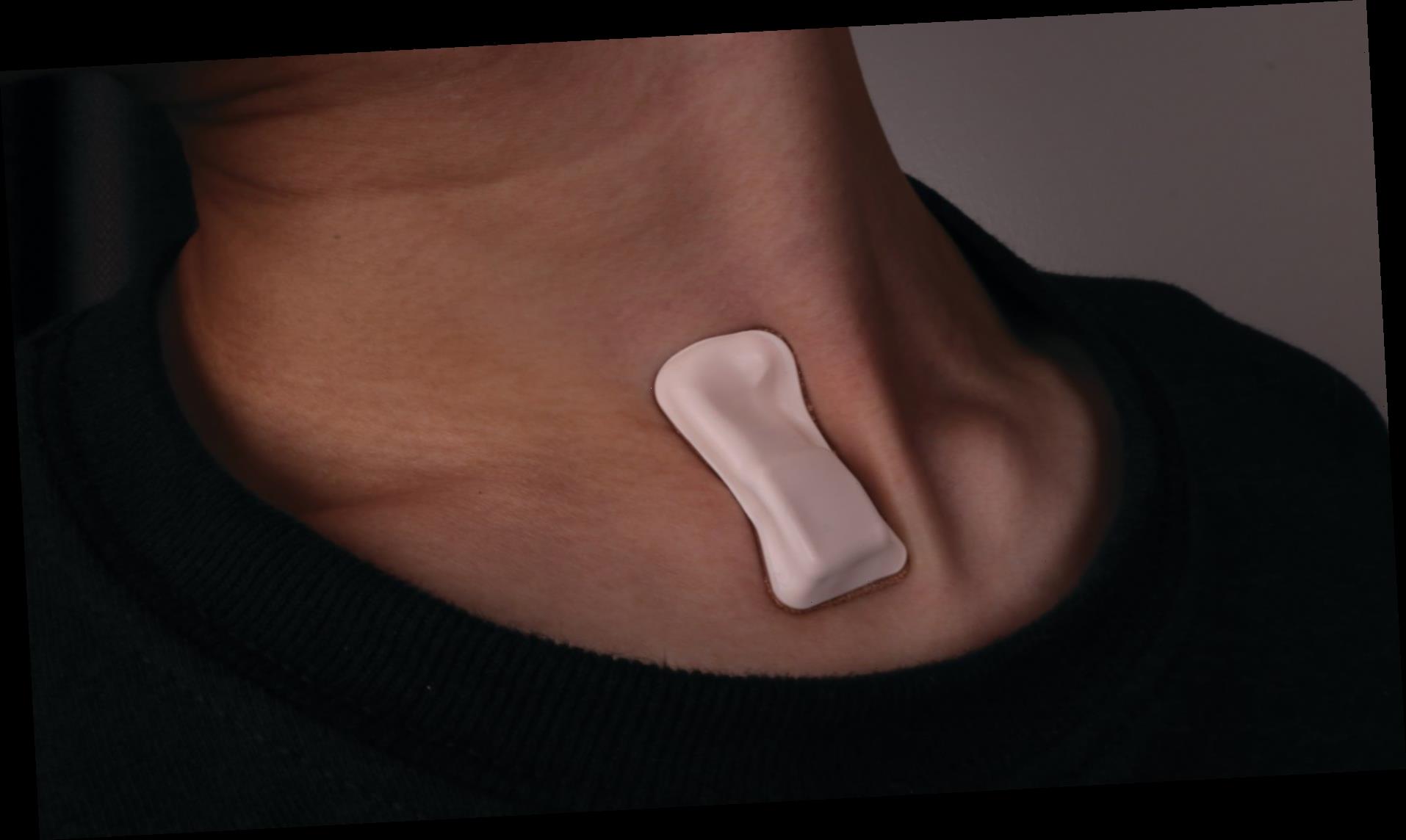A NEW gadget may be able to detect early signs of coronavirus, scientists say.
The wireless device, which looks like a first aid plaster, sticks to the base of the throat and monitors throat movement and breathing, as well as heart rate and temperature.
⚠️ Read our coronavirus live blog for the latest news & updates
Researchers from Northwestern University and Shirley Ryan AbilityLab in the US developed the flexible device – and say its technology is similar to sensors designed to monitor speech and swallowing in recovering stroke patients.
The tech is also not unlike the chips you’d find inside FitBits and other fitness trackers.
The device for Covid-19 is part of a growing effort to develop remote patient monitoring programmes that allow hospitals and health systems to check up on patients at home.
The scientists explain that users would wear the gadget for all hours of the day – only removing it once for daily charging.
Abnormalities detected
And while it charges, the patch's stored data is synced with a smart device such as an iPad or laptop, which is when any coronavirus-related abnormalities are revealed.
John Rogers, director of Northwestern’s Center on Bio-Integrated Electronics, told CNet that the gadget is both reusable and unobtrusive, and also measures heart rate and temperature.
"We don't use a microphone," he said.
"There are problems with microphones with ambient noise and tremendous invasions of privacy. We use a high-bandwidth, tri-axis accelerometer to measure movement of the surface of the skin."
The idea is to create a monitoring platform that tracks patients throughout the day, rather than in isolated moments, Rogers added.
Care providers can use the data from devices like this to not only check in on a patient at a specific time – rather than waiting for the patient to come to the doctor’s office or the hospital – but also to monitor that patient’s health over time to spot trends and catch health concerns before they become more severe.
"I think that demands a hardware platform that is virtually imperceptible," Rogers said.
"Health care in general will be improved when you move from episodic monitoring of status to continuous. I've always thought that makes sense."
Tracks throughout day
Researchers suggested a “blood oxygen perfusion sensor” may be in store for the patch.
Last month, doctors claimed a simple £20 device called a pulse oximeter could help identify if you are falling severely ill with coronavirus.
Pulse oximeters clip over the fingertip or ear to measure blood oxygen levels in the body and tell you how well the heart and lungs are working.
The matchbox-sized devices – which can be bought online or from shops like Argos – may be essential for those with serious lung problems.
Detection of low oxygen levels, early treatment and close monitoring also appeared to have helped Prime Minister Boris Johnson.
Pulse oximeters work by emitting a beat of light through the finger to a sensor on the other side of the unit.
Oxygenated and unoxygenated blood absorbs light differently, so the device looks at the pattern of light to determine the amount of oxygen in the blood.
That reading is then displayed on its digital screen.
A number above 95 per cent is normal for a healthy person at rest.
Blood oxygen levels
But for people with conditions that cause breathing difficulties – often categorised under the term chronic obstructive pulmonary disease (COPD) – the figure can be much lower.
Those patients can use them to track changes in blood oxygen levels and determine whether or not their medication needs to be adjusted or even if they need to go to hospital.
The devices became common in GP practices around five years ago and more recently, people have started using them at home.
Coronavirus symptoms generally are a persistent cough and a fever, but some will go on to develop breathing problems.
The virus can multiply in the respiratory tract, which affects the airways, making it harder to breathe normally.
It can develop into a severe condition known as acute respiratory distress syndrome (ARDS).
Those patients will be admitted to intensive care where they may need a ventilator to help get oxygen moving around the body.
CORONAVIRUS CRISIS – STAY IN THE KNOW
Don't miss the latest news and figures – and essential advice for you and your family.
To receive The Sun's Coronavirus newsletter in your inbox every tea time, sign up here.
To follow us on Facebook, simply 'Like' our Coronavirus page.
Get Britain's best-selling newspaper delivered to your smartphone or tablet each day – find out more.
Source: Read Full Article









